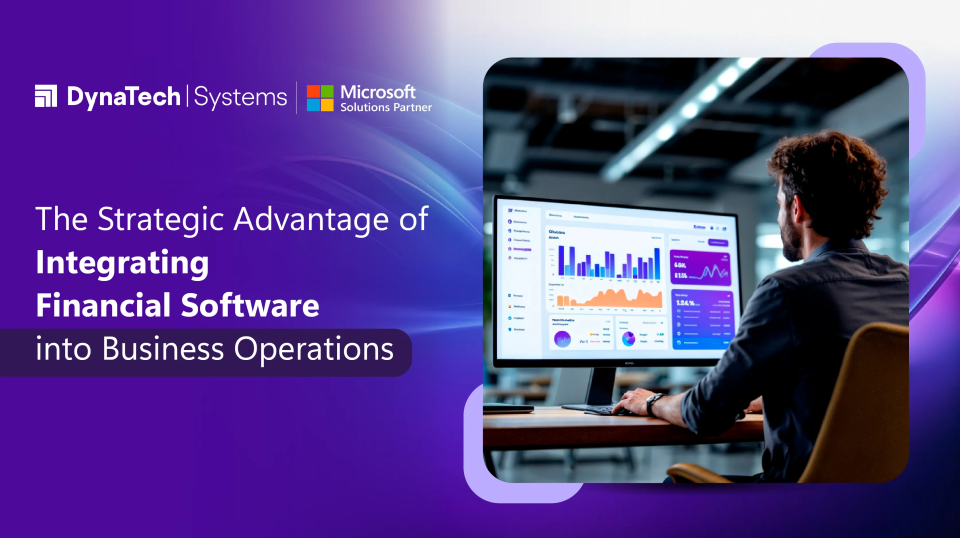You're reconciling books at midnight. Again. Someone from sales just sent another spreadsheet that doesn’t match what the finance team has. Your team is spending more time fixing errors than analyzing numbers. And no one really knows which version of the truth to trust.
Sound familiar?
This isn’t just a minor headache—it’s a business risk. Disconnected systems, manual entries, and outdated finance tools lead to more than inefficiencies; they create roadblocks that slow down decision-making, increase compliance risks, and cost you real money.
According to a PwC report, 30% of finance time is still spent on manual tasks that could be automated. That’s time your competitors are using to scale smarter.
So, why integrate financial software now? Because automation in financial industry processes isn’t just about saving time—it’s about unlocking new potential across your entire organization.
In this blog, we’ll break down:
- How Does Finance Automation Work
- Key Benefits of Finance Automation
- The role of consistency in financial processes with F&SCM
- What automating finance function really looks like day-to-day
- And how companies like yours are already gaining from it
No jargon. No fluff. Just clarity, value, and practical insights to help you decide what’s next—and why waiting might cost you more.
How Does Finance Automation Work?
Automation in finance isn’t about replacing your team—it’s about giving them better tools to handle tasks that don’t need to be done manually anymore.
Here’s what it really looks like in practice.
Step 1: Connecting the Systems
Everything starts with integration. Your finance software connects with the other systems your business uses—ERP, CRM, procurement tools, payroll, banking platforms. Without integration, there’s no automation. You’d still be copying data between apps.
When your tools talk to each other, things move faster. A sales order from the CRM can trigger an invoice in your accounting software. A PO from supply chain updates your payables. No back-and-forth, no spreadsheets.
Step 2: Automating the Workflows
Once systems are connected, you create rules. These rules are what drive automation.
Let’s say:
- Every invoice below ₹25,000 gets auto-approved.
- If a PO is already approved and matches the invoice, it goes straight to payment.
- Any mismatch? The system alerts the finance manager.
This is the backbone of automation. These repetitive decisions can be handled by the system itself—24/7, no errors.
Step 3: Real-Time Processing & Alerts
Modern platforms like Microsoft Dynamics 365 F&SCM help maintain consistency in financial processes with F&SCM. The software handles transactions in real time, and you get notified only when something goes wrong.
- If tax is incorrectly calculated, it’ll be flagged.
- If a vendor duplicates an invoice, you’ll see it immediately.
- If someone forgets to attach supporting documents, the process stops until it’s fixed.
So you're in control—but not tied to the process.
Step 4: Live Data, Not End-of-Month Surprises
This is the part that changes everything. Instead of waiting until the 30th to know how you're doing financially, you see accurate numbers every day. Cash flow, receivables, revenue projections—all up to date.
With everything automated and synced, you’re no longer relying on stitched-together spreadsheets.
To sum it up:
How does finance automation work?
By connecting your systems, applying smart rules, automating repetitive actions, and making finance predictable, faster, and cleaner.
Benefits of Finance Automation
Finance teams today are under pressure—from leadership, from regulators, from the clock. And manual processes? They only slow things down.
The benefits of finance automation aren’t just about cutting costs. They're about making sure your finance function is fast, transparent, and strong enough to support real growth.
Here’s what it changes, in simple terms:
Less Manual Work
Nobody became a finance professional to spend hours updating spreadsheets or chasing approvals. Automation handles those things quietly. Automatically creates journal entries. Sends reminders. Matches invoices.
You get time back—and fewer mistakes.
Fewer Errors
Most financial errors aren’t big. But they pile up. A decimal in the wrong place. A missed approval. Duplicate entries. Automation follows your business rules consistently. The same every time. No shortcuts. No fatigue.
Faster Closings
Month-end doesn’t have to mean late nights. With automation, your data flows in real-time. Reconciliations happen daily, not in a rush at the end. Your reports are cleaner. The close is quicker. Less stress, fewer corrections.
Real-Time Visibility
What’s your cash flow right now? With manual systems, you probably won’t know until someone runs a report. With automation? It’s always available. Dashboards update as transactions happen. That means better forecasting—and faster decisions.
Compliance Is Easier
Audit season? No problem. Every approval is logged. Every transaction is traceable. Automation builds the audit trail for you as work gets done. Less scrambling, more control.
Growth Without Chaos
If your company grows fast, manual finance processes won’t scale. Automation gives you the structure to handle more volume, more complexity, and more global rules—without adding three more people to the team.
Tools like Microsoft Dynamics 365 F&SCM help enforce structure across your operations—bringing consistency in financial processes with F&SCM that’s critical when you're growing or expanding.
DynaTech Can Help
DynaTech works with mid-sized and enterprise clients to automate their finance operations end-to-end. We specialize in solutions powered by Microsoft Dynamics 365, including:
- D365 Finance & Supply Chain Management
- Custom API integrations for automation
- BI dashboards tailored for finance
- Pre-built connectors for payments, shipping, and tax compliance
Whether you're looking to reduce manual entry, accelerate closings, or support your expansion into new markets—our consultants can design a solution that fits.
Commonly Used Finance Automation Technologies
Modern finance automation isn’t driven by a single tool. Instead, it relies on a carefully orchestrated mix of technologies that handle different layers of financial operations. Here's a breakdown of the most widely adopted ones:
1. Optical Character Recognition (OCR)
OCR technology allows financial systems to convert scanned documents—such as invoices, receipts, or payment confirmations—into machine-readable text. It eliminates the need for manual data entry by capturing relevant information like vendor names, invoice numbers, due dates, and amounts with a high degree of accuracy.
2. Robotic Process Automation (RPA)
RPA mimics human actions in software systems. It’s typically used to automate rule-based, repetitive tasks such as populating spreadsheets, matching transactions, or generating routine reports. Unlike AI, RPA doesn’t “think,” but it executes tasks quickly, consistently, and without human error.
3. Artificial Intelligence (AI)
AI plays a more cognitive role. It analyzes large volumes of financial data to identify trends, forecast outcomes, and flag anomalies. Over time, AI-driven systems become more accurate in assisting decision-making, especially in areas like fraud detection, credit scoring, or revenue forecasting.
4. Machine Learning (ML)
Machine learning is a subset of AI, but with a narrower focus: it continuously learns from historical data and user corrections. For example, if an expense is misclassified and later corrected, the system can remember the change and apply that logic moving forward. This makes ML highly effective for improving accuracy over time in categorization and approvals.
5. Cloud-Based Finance Platforms
All of the above technologies are typically supported through cloud infrastructure. Cloud platforms offer secure, real-time access to financial data from anywhere, ensuring transparency and alignment across departments. They also provide scalability and lower maintenance compared to traditional on-premise systems.
6. Business Rules Engines
These engines ensure that financial processes follow internal policies and compliance standards. They apply logic such as approval hierarchies, spending limits, and vendor rules, automatically enforcing governance without requiring manual intervention in every case.
7. Integration APIs
APIs act as connectors between multiple systems—ERP, CRM, banking, eCommerce, and tax platforms—allowing for seamless data sharing and real-time synchronization. This reduces errors caused by duplicate entries and helps maintain data consistency across platforms.
Conclusion
It’s not hard to see where things are going.
Finance teams that continue doing everything manually — approvals, reconciliations, vendor tracking — end up spending most of their time just trying to “keep up.” That’s not sustainable, especially when accuracy and speed both matter.
Automation doesn’t solve everything. But what it does well — it does very well. It reduces mistakes. It creates breathing space. And it brings consistency, especially for teams working across multiple regions, departments, or systems.
And here's the thing: it’s not about adopting the most advanced tool. It's about fixing what’s slow and streamlining what’s already working.
At DynaTech, as a Microsoft solutions partner, have helped clients do just that — no generic templates, no rushed integrations. We build automation around your structure. Around your people.
If you’re ready to take the next step — whether it’s setting up invoice workflows, automating month-end processes, or simply connecting your existing systems — we’ll guide you through it, from assessment to execution.




























